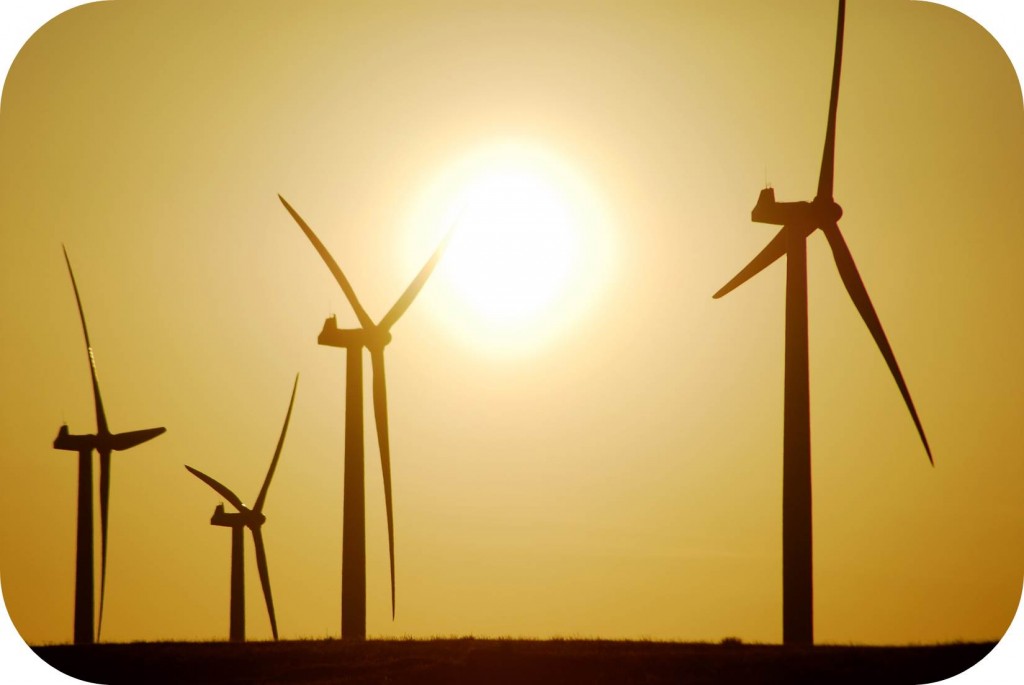Types of wind power
The energy in the wind can be harnessed by wind mills, wind pumps and wind turbines. Wind mills and wind pumps have been used for centuries to grind grain and flour and pump water up to the earth’s surface from underground. Wind turbines are more modern and are used to generate electricity. Wind turbine farms can be located on land (onshore) or out at sea (offshore).
How does it work?
Wind energy catches the blades of the rotor or turbine to make it turn. This movement can be used to generate electricity.
Cost and efficiency
An onshore wind turbine can be as much as 59% efficient, depending on the wind speed.
For a turbine to be built, the site needs to have a wind speed of 7 metres per second to make it worthwhile. However, a wind speed below this may be viable depending on other financial arrangements and grants.
It costs over £1m to build a big turbine. It will have a life-span of 20 years and will payback its construction cost in about 7 years. Offshore turbines are more expensive than those on land but they are also more powerful and more efficient and pay back their construction cost more quickly.
Typical Size
A typical turbine has a height of 60-80 metres and blade length 30-40 metres. Wind farms often consist of anything between 20-200 turbines.
Locations around the UK
There are 16 offshore wind farms currently around the coasts of the UK, with more under construction. There are also over 300 onshore wind farms.
Good news
Wind is free and no waste or greenhouse gases are produced. Onshore farms do not take up much space and can be good for remote locations.
Bad news
Modern wind turbines can be expensive, hard to find the right location and get planning permission for and need a suitable grid connection. The wind is also not fully predictable and may not always be strong enough to generate electricity when it is needed. Offshore wind farms need to be connected to the grid using very long cables lying on the sea bed and shipping lanes have to be taken into consideration when planning.
Energy storage
The energy cannot be stored and electricity generation relies on there being wind. Wind energy could be used to charge batteries.
Environmental impact
Turbines are often put up in farmers’ fields but they do not use up too much crop growing space.
Human impact
Large wind turbines can affect the view, and in some cases bring neighbouring house prices down. Many people feel that wind turbines are fine unless they are ‘Not In My Back Yard’ (NIMBY). They generate a little bit of noise but you can only hear when you are nearby.
Is it a viable power source for the UK?
You would have to have to install a lot of wind turbines on land in the UK to be able to power the country using onshore wind power and it would take up a huge area of land and not all land available in the UK is windy enough to be suitable. Our energy consumption is just too big to be powered by onshore wind energy alone. Offshore wind farms deliver more power over the same area than onshore wind farms because the wind is stronger and steadier. Installing farms out at sea wherever possible would still not cover all our current energy needs, but
Current research
Scientists and engineers are currently working on making wind turbines more efficient so they can be made smaller, more powerful or quieter.



